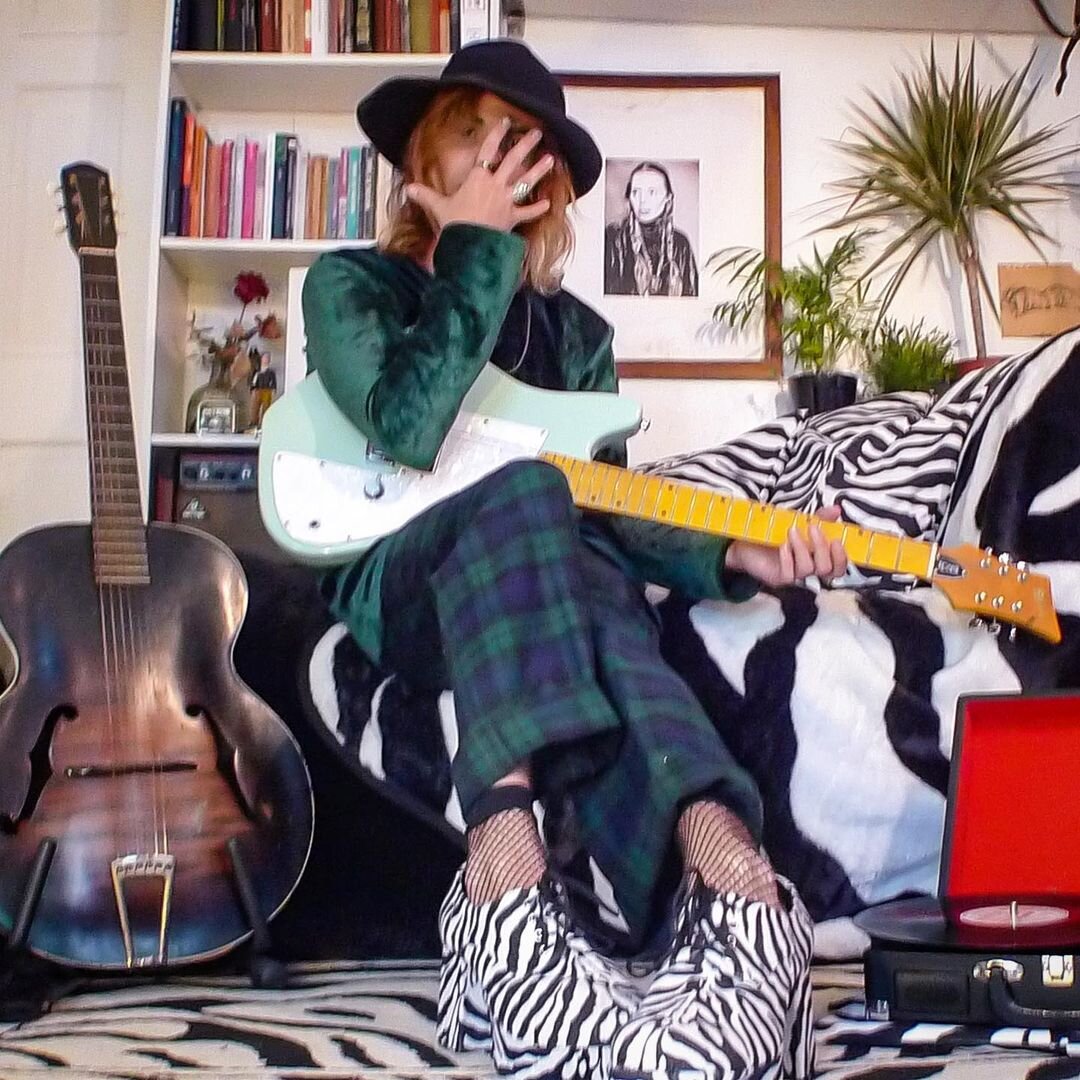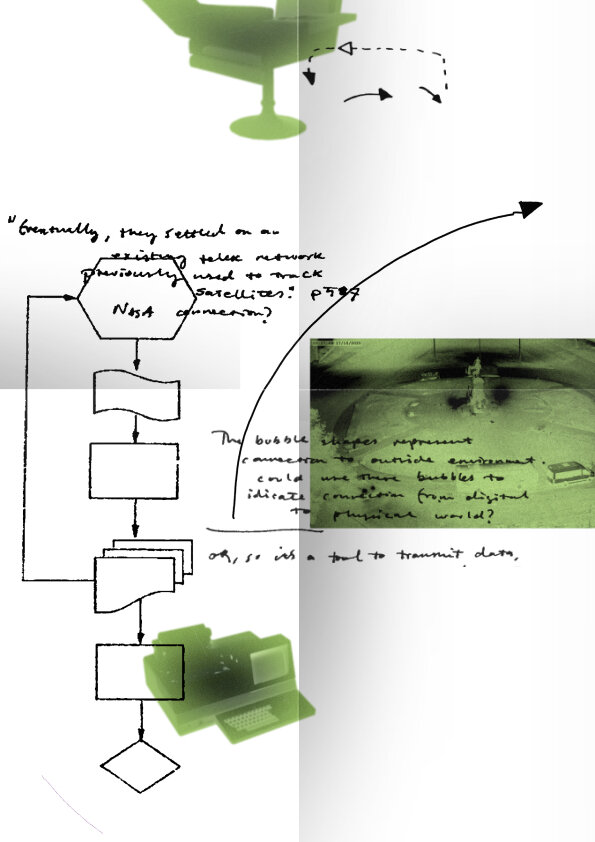Kids At Dawn
Whenever I try and think of one key factor to fashion’s continuous presence in our lives, the collocation world-building” immediately comes to mind.
As much as the industry is a mega-polluting world-destroyer, I’m still hopeful that fashion—both as the craft of clothe-making and a critical commentary—can return to its roots as a tool for us to fabricate alternate universes, where our expression is unhinged and our being is ever-fluid and limitless. To remain hopeful about the state of the industry has been getting harder and harder by the day, yet sometimes it really does take one spark to light a fire.
Paris-based designer, 3D modelist and self-proclaimed sorcerer, Victor Clavelly, is doubtlessly a bright light in the dark tunnel that the fashion world often can be. Clavelly, who says he’s “closer to Sarouman the White than to Jean-Paul Gaultier”, is more of a world-builder than a fashion designer. This young sorcerer works his magic using a mix of compelling ingredients: long-forgotten materials, otherworldly patterns and shapes, CGI avatars, and a whole lot of storytelling. Clavelly’s latest collection, “The Orphans Creatures”, presents a somewhat uncanny but peaceful universe, where goblins, anti-fashion knights and alien-human hybrids co-exist in chaos and harmony.
Instantly succumbed to Clavelly’s fantasy world, photographer Zoé Chauvet, art director Chloé Sapelkine and myself set out on a mission to translate the sorcerer’s magic into images and words. Below you will find our conversation with the artist, alongside an editorial—KIDS AT DAWN—which imagines Clavelly’s orphan creatures narrative as a Marie Antoinette-inspired ball for all beings of the Underworld.
Hey Victor! How did you get into fashion in the first place?
Fashion and my taste for it came quite late in my life. After graduating from high school, I applied for studies at several subsidiaries without knowing what it was I wanted to do. I had no [fashion] references that ever attracted me either. When I started my fashion studies however, I very quickly fell in love with the school itself and the people around me. I met people, who were so passionate and stimulating, and I learned a lot from them.
And what would you say is the mort important part of your creative process?
When I start a collection, I draw for a long time. Often, the ideas are already in notebooks, and I love to create lores around the universes of my collections. In a sense, the narration of the universe is the most important element. I don't like to make clothes without context, and hence without a soul.
Speaking of universes and narratives, I see a lot of alien creatures loving your clothes! Could you tell me more about your interest in extraterrestrial subjects and how those relate to your own practice?
Indeed! As I said, the legends I invent are animated by fictional creatures, these artificial chimeras are the essence that animates the clothing bodies I create later in my process. It's a very creative and liberating nature of my work in 3D; it’s a part of my workflow that I prefer. It's by invoking these creatures that the motivation comes to me and gives life to my work.
Is this related to the term “sorcerer”, which you label yourself as in your IG bio?
The label “sorcerer” came from a "Dungeon and Dragons" role play a friend and I did. I was playing a female sorcerer orc named Shelob; she was the main character of my latest collection [seen throughout this photoshoot], "The Orphans Creatures”. I resonate with this process of “invocation”, and so I like to label myself as a “sorcerer”. Also, I cannot relate to the "createur de mode”… As we all know, fashion is mega industry of waste, hyper consummation, pollution, and so on, and a fashion designer is kind of evil in a way. I'm closer to Sarouman the White than Jean-Paul Gaultier. [Laughs]
Your choice of fabrics and colours makes me think of the sort of clothes a futuristic army of avatars would wear to the Apocalypse Ball. Would you agree? Is there a specific message to these fabric and colour choices, or is this your intuition speaking and creating?
I think that for now I'm just using fabrics that I can afford. It’s way too expensive to create a full collection, so most of the fabrics you see in my collections are stolen from my school or from the various internships I did. The rest came from second-hand shops, such as all my buttons and accessories. I really like this process, it obliges me to improvise with what I have. And I always need to improvise. It's also interesting to work with those lost heritages abandoned in a second-hand shop; old sewing boxes full of treasures, furniture passamentry, placemats, knits, and so on.
Going back to your 3D practice, how is that field different to you than fashion? And in what ways are they similar?
I'm actually having a break from fashion to improve my 3D skills. My practice in CGI permits me to improve my universes without any limit. 3D is a dimension without any boundaries, and I think I can learn a lot from the CGI workflow to create a collection. Fashion is also so time-consuming, it needs so many people, money, resources, and all of that to always be late and in a hurry. Basically, DO NOT WORK IN FASHION.
Haha! I’d still like to hear your opinion on the future of clothes-making however. What’s your vision on that?
Fashion is evolving in a way that we saw coming for years actually; with the numerics, the digital aesthetic, the gaming industry, the avatar thing, social media, etc. Fashion’s use of CGI wasn't really relevant for a while, but now things are getting interesting because there’s questions about the way to communicate, consume and create fashion, even more so with the sanitary crisis that really slows down this crazy-ass industry. That's why I'm actually delving more and more in the CGI industry at the moment, where, unlike fashion, there are a lot of positions to be filled.
How do you think technology has changed clothes-making? And what will be technology’s place in the future of fashion?
Technology has always simplified our life and I think it will be the same for fashion. I think we have to be very careful with the use of technology, because it must not be a way to produce more and faster and make even more money. It has to be a way to make fashion evolve in a good way. Maybe fashion can become an industry that pollutes less? I have some doubts about it, but as a young fashion designer I could make my way into fashion and influence some people while also staying ethical. It’s a big challenge for my generation. Fashion won’t stop, but maybe people could?
Lastly, are there any limits, personal or professional, you’d like to push and exceed?
This period is really fuzzy for me, my generation, and at large. It’s like I’m hibernating even though I work so much. But, at the same time, I really want to identify my practice and find my place—if I have one—in the fashion industry. My CGI practice really helps me to take a step back to gain momentum. I don't want to reproduce the same pattern as every other fashion brand, I need to stay multi-disciplinary, motivated, and ethical with the world and myself.
photography ZOÉ CHAUVET
art direction CHLOÉ SAPELKINE and VALKAN DECHEV
makeup ARNAUD SWAN
hair CHLOÉ SAPELKINE
models JAI, DARIA, PAULINE, QUENTIN, CAROLINE, PHILOU, HÉLÈNE
photography assistance SIDONIE RONFARD
interview VALKAN DECHEV
What to read next

Frank Malachi















